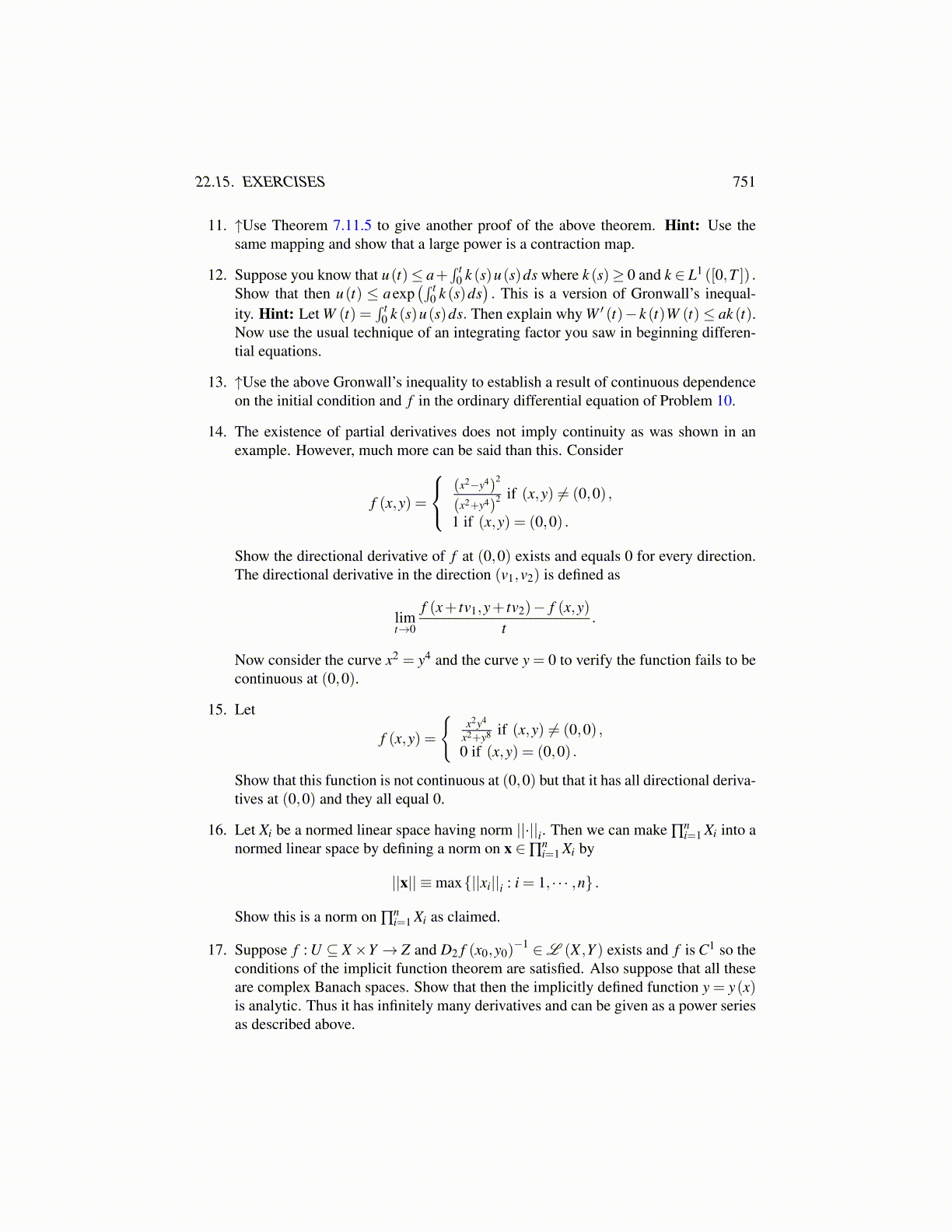
22.15. EXERCISES 751
11. ↑Use Theorem 7.11.5 to give another proof of the above theorem. Hint: Use thesame mapping and show that a large power is a contraction map.
12. Suppose you know that u(t)≤ a+∫ t
0 k (s)u(s)ds where k (s)≥ 0 and k ∈ L1 ([0,T ]) .Show that then u(t) ≤ aexp
(∫ t0 k (s)ds
). This is a version of Gronwall’s inequal-
ity. Hint: Let W (t) =∫ t
0 k (s)u(s)ds. Then explain why W ′ (t)− k (t)W (t)≤ ak (t).Now use the usual technique of an integrating factor you saw in beginning differen-tial equations.
13. ↑Use the above Gronwall’s inequality to establish a result of continuous dependenceon the initial condition and f in the ordinary differential equation of Problem 10.
14. The existence of partial derivatives does not imply continuity as was shown in anexample. However, much more can be said than this. Consider
f (x,y) =
(x2−y4)2
(x2+y4)2 if (x,y) ̸= (0,0) ,
1 if (x,y) = (0,0) .
Show the directional derivative of f at (0,0) exists and equals 0 for every direction.The directional derivative in the direction (v1,v2) is defined as
limt→0
f (x+ tv1,y+ tv2)− f (x,y)t
.
Now consider the curve x2 = y4 and the curve y = 0 to verify the function fails to becontinuous at (0,0).
15. Let
f (x,y) =
{x2y4
x2+y8 if (x,y) ̸= (0,0) ,0 if (x,y) = (0,0) .
Show that this function is not continuous at (0,0) but that it has all directional deriva-tives at (0,0) and they all equal 0.
16. Let Xi be a normed linear space having norm ||·||i. Then we can make ∏ni=1 Xi into a
normed linear space by defining a norm on x ∈∏ni=1 Xi by
||x|| ≡max{||xi||i : i = 1, · · · ,n} .
Show this is a norm on ∏ni=1 Xi as claimed.
17. Suppose f : U ⊆ X×Y → Z and D2 f (x0,y0)−1 ∈L (X ,Y ) exists and f is C1 so the
conditions of the implicit function theorem are satisfied. Also suppose that all theseare complex Banach spaces. Show that then the implicitly defined function y = y(x)is analytic. Thus it has infinitely many derivatives and can be given as a power seriesas described above.